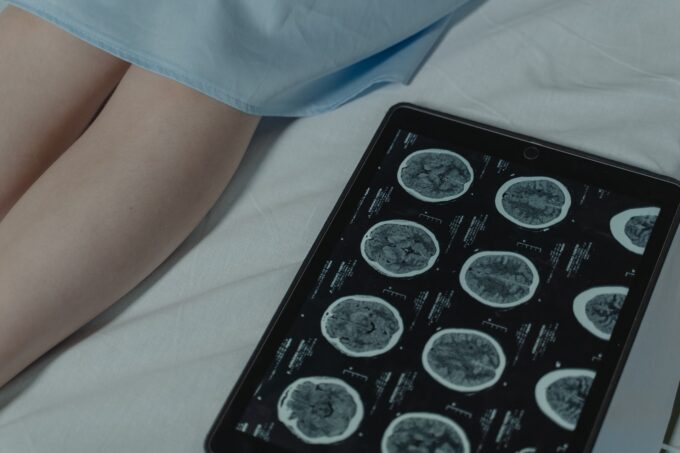
Glioblastoma is a type of brain tumor. Treatment can include surgery, radiation and chemotherapy. It may also include physical therapy, occupational therapy or speech therapy to help with symptoms like memory problems and changes in thinking.
Patients and caregivers may have different emotions about being diagnosed with glioblastoma. These feelings are normal.
Talk with Your Healthcare Team
Glioblastoma (GBM) is a fast-growing cancer that starts in cells called astrocytes. These cells normally help support and carry nutrients to nerve cells in the brain.
Glioblastoma forms microscopic branches that spread into different brain areas as it grows. These branching patterns make it difficult to remove the entire tumor with surgery.
Often, your team will use other treatments after surgery to get to the remaining cancer cells. These treatments might include chemotherapy and radiation. Sometimes, your doctor may recommend a clinical trial of a new treatment.
As a person with glioblastoma approaches the end of life, they may experience symptoms such as headaches, seizures and muscle weakness. They might also notice changes in their breathing, which may become slower, less regular and deeper.
Take Care of Yourself
Glioblastoma can be hard for both patients and caregivers. It’s important to take steps to stay healthy and to seek support through Glioblastoma Foundation.
GBMs usually grow into important brain parts; removing all tumors with surgery is often impossible. The tumor also spreads quickly and contains different types of cells, so a treatment that works on some of these cells may not work on others.
Radiation therapy uses powerful energy beams to kill cancer cells and shrink tumors. It might be combined with chemotherapy medications, such as temozolomide, which you take as a pill. Your healthcare team might also prescribe steroid medicines to reduce swelling in the brain and treatment to improve alertness. Some people also benefit from spiritual practice, such as meditation or prayer.
Educate Yourself
A GBM is a tumor that arises from cells that support and nourish brain neurons, called glial cells. It tends to infiltrate adjacent brain tissue and can be difficult to treat.
Glioblastoma is very aggressive, and patients often die within a year of diagnosis. However, some things can be done to improve the quality of life and increase survival rates.
According to Glioblastoma Foundation professionals, people diagnosed with glioblastoma may experience changes in their mood and emotions. These changes are usually related to where the tumor is located. For example, a tumor in the frontal lobe may affect social cues, decision-making, and emotions. Patients can also develop problems with higher-level cognitive processes, such as balancing a checkbook or completing a job application. Some of these changes can be addressed with medications.
Make Time for Friends and Family
Many patients and caregivers find themselves overwhelmed by navigating the emotional impact of glioblastoma and the complex care it requires. Providing updates to friends and family about your loved one’s progress can be tiring, especially if you are the only person able to do so.
It may be helpful to think of friendships as “rocks” and other activities and commitments as “sand.” Schedule time with friends (the rocks) first, then let the sand fill around it.
Remember to make time for long-distance friends, even to send a card, text or leave a message on their voicemail. Research shows that this connection can help reduce depressive symptoms and increase satisfaction. (Piil et al., 2015b).
Get Support
Glioblastoma multiforme (GBM) is adults’ most common primary brain tumor. It develops in star-shaped cells called astrocytes, which help support neurons while carrying nutrients. GBM can grow quickly and spread to nearby brain tissue, causing problems with vision, speech, thinking, and behavior.
As a patient or caregiver, you may have questions and concerns about your health, the effects of treatment, and end-of-life care. It’s important to seek support from family and friends. The help of a social worker, clergy member, or counselor can also be helpful. You may also find it beneficial to talk with others in similar situations through a cancer support group. You can find online forums through organizations.














